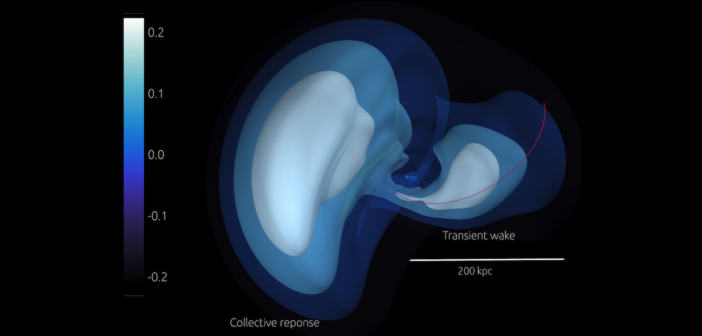New simulations show how the outer regions of the Milky Way are shaped by the motion of its largest satellite galaxy, the Large Magellanic Cloud (LMC). Using 100 million simulated dark matter particles, a team led by Nicolás Garavito-Camargo (Steward Observatory, University of Arizona) shows that the LMC creates a wake in the Milky Way’s dark matter halo, like a ship traveling across the ocean, as it swings past our galaxy. The friction between the LMC and the Milky Way’s halo will cause the smaller galaxy to lose energy and eventually merge with the Milky Way. The gravitational influence of the LMC introduces an asymmetry into the roughly spherical dark matter halo, which is shown in the above image and in the video below. By pairing simulations like this one with the wealth of data from upcoming all-sky surveys, astronomers should be able to account for this asymmetry and probe the underlying shape of the Milky Way’s dark matter halo to learn more about how our galaxy formed on cosmological timescales. To read more about their results, check out the article below.
Bonus
Check out this video, which shows how the structures seen in the authors’ simulations relate to the positions of the Milky Way and the LMC. [NASA/JPL-Caltech/NSF/R. Hurt/N. Garavito-Camargo & G. Besla]
Citation
“Quantifying the Impact of the Large Magellanic Cloud on the Structure of the Milky Way’s Dark Matter Halo Using Basis Function Expansions,” Nicolás Garavito-Camargo et al 2021 ApJ 919 109. doi:10.3847/1538-4357/ac0b44
